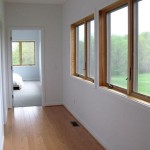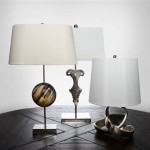Interior Design Decorating Tips
Transforming a house into a home involves more than just putting furniture in place. Interior design encompasses the art and science of enhancing the functionality and aesthetics of a space. It's about creating environments that are not only visually appealing but also comfortable, inviting, and reflective of the occupants' personalities and lifestyles. Whether you're embarking on a complete overhaul or seeking subtle enhancements, understanding fundamental decorating tips can empower you to create a space that resonates with your vision.
Define Your Style and Inspiration
Before diving into any design decisions, it's essential to establish a clear understanding of your desired style. This involves reflecting upon your personal preferences, lifestyle, and the overall mood you wish to create. Inspiration can be drawn from various sources, such as magazines, websites, social media platforms, art museums, and even nature itself. Consider the following factors:
- Color Palette: Choose a color scheme that complements your chosen style and evokes the desired mood. Warm colors like reds and oranges create a welcoming atmosphere, while cool colors like blues and greens promote tranquility.
- Texture and Pattern: Introduce visual interest and depth through a combination of different textures and patterns. Experiment with smooth surfaces, textured fabrics, and geometric or floral patterns.
- Lighting: Lighting plays a crucial role in setting the mood and highlighting key features. Consider using a layered approach with ambient, task, and accent lighting to create a balanced and versatile lighting scheme.
Once you have a clear vision of your desired style, you can start narrowing down your design choices and identifying specific elements that resonate with your aesthetic.
Create a Functional and Comfortable Layout
The arrangement of furniture and other elements significantly influences the flow and functionality of a space. A well-planned layout ensures optimal traffic flow, maximizes storage potential, and creates a sense of balance and harmony. Consider the following tips:
- Traffic Flow: Ensure that pathways are clear and unobstructed, allowing for comfortable movement around the space. Avoid placing furniture in the middle of walkways.
- Focal Point: Identify a focal point in each room – a fireplace, a large window, or a statement piece of furniture – and arrange the furniture around it to create a sense of visual interest.
- Scale and Proportion: Pay attention to the size and proportions of furniture and accessories. Ensure that the pieces chosen are appropriate for the size of the room and create a harmonious balance.
- Storage Solutions: Incorporate storage solutions that are both functional and aesthetically pleasing. Consider built-in shelves, cabinets, ottomans with storage compartments, or decorative baskets.
A thoughtfully designed layout not only enhances the aesthetics of a space but also improves its usability and overall comfort.
Add Personal Touches and Character
The true essence of interior design lies in reflecting the personality and preferences of the occupants. Personal touches and unique accents transform a space from a generic shell into a cherished home. Incorporate elements that evoke memories, reflect passions, or simply delight the senses. Consider the following:
- Artwork and Photography: Display artwork, photographs, and other decorative items that resonate with your interests and stories. Pieces that hold personal significance add a sense of warmth and individuality.
- Plants and Greenery: Introduce natural elements like plants and flowers to bring life and freshness to the space. They can also help purify the air and create a sense of tranquility.
- Travel Souvenirs: Display travel souvenirs, such as pottery, textiles, or sculptures, to add a touch of global flair and create conversation starters.
- Family Heirlooms: Incorporate family heirlooms or cherished items into the design to create a sense of history and connection to the past.
By adding these personal touches, you create a space that is truly your own, reflecting your unique journey and experiences.
Embrace Color and Texture
Color and texture play a crucial role in shaping the mood and atmosphere of a space. They can evoke a sense of energy, tranquility, or sophistication, depending on the choices made. Consider the following:
- Neutral Base: Start with a neutral base for walls, furniture, and flooring. This provides a blank canvas for introducing accent colors and textures without overwhelming the space.
- Accent Colors: Introduce splashes of color through throw pillows, rugs, artwork, or accessories. Choose colors that complement the overall color scheme and create a desired effect.
- Textural Variety: Incorporate a variety of textures through different fabrics, materials, and finishes. Mixing smooth and rough textures creates visual interest and depth.
- Pattern Play: Utilize patterns strategically to add visual interest and break up large areas. Ensure that patterns are balanced and do not clash with each other.
Experiment with different colors and textures to discover combinations that resonate with your personal style and create the desired ambiance for each space.

60 Clever Home Decor Ideas That Designers Swear By

Home Interior Design Tips How To Decorate A Tasteful

Interior Design Styles 101 The Ultimate Guide To Decorating In 2025 Decorilla

80 Gorgeous Living Room Decorating Ideas For Every Style

50 Small Apartment Decorating Tips That Maximize Style

100 Home Decor Ideas The Ultimate Inspiration For Interior Designers

Pro Designers Share Their Best Bookshelf Decorating Tips

17 Expert Interior Design Ideas For Your Home Extra Space Storage

Interior Design Styles 101 The Ultimate Guide To Decorating In 2025 Decorilla

25 Tips For Decorating A Modern Home Extra Space Storage








